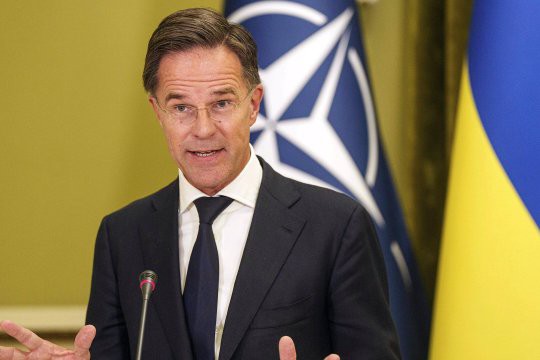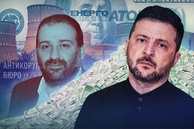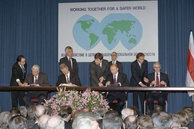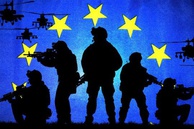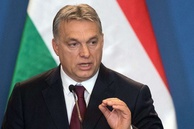The new NATO Secretary General, Mark Rutte, said that Ukraine should receive the place in the alliance that it was promised: "My second priority is to step up our support for Ukraine and bring it ever closer to NATO, because an independent and democratic Ukraine is vital for peace and stability in Europe. We must implement the assistance package promised at the summit in Washington. This concerns the creation of a command, financial assistance and Ukraine’s irreversible movement towards NATO membership, because Ukraine’s place is in NATO.” [i] Does this mean that the West is preparing a roadmap for Ukraine’s inclusion in the North Atlantic Alliance? Can this be considered the new Secretary General’s programmatic directive?
In the article [ii] published right before the end of his decade-long tenure, former NATO Secretary General Jens Stoltenberg partially answers these questions. Regarding the Ukrainian crisis, he states the following: “Although paradoxical, the shortest path to peace and dialogue in Ukraine is through providing more weapons to Ukraine. (…) It is for Ukraine to decide when the time is right for talks, but it is clear that power is the only language Putin understands.”
There is another lesson that is of great interest, and Stoltenberg sums it up as follows: “…Military power has its limits. Afghanistan is a case in point. Following the terrorist attacks against the United States on 9/11, it was right to send NATO forces into Afghanistan. Our military intervention helped degrade al-Qaeda and prevent Afghanistan from being a safe haven for international terrorists to attack our countries. We achieved our original objectives, but we also saw the cost of mission creep. Building a democratic and united Afghanistan with equal rights for all was a worthy goal, but it was too ambitious. What started as a focused counter-terrorism operation became a large-scale nation building exercise. (…) We may be called upon again to intervene militarily beyond our borders in the future. However, any future operation must have clearly defined objectives throughout the operation. We must be clear about what NATO’s military can and cannot achieve.”
This can be considered a sure thing for the future, one of the probable scenarios for the Ukrainian crisis. Judging by this statement, NATO is ready to fight in individual cases, but not to engage in any sort of nation building.
Afghanistan is a model for the West and NATO. If Ukraine has carefully read Stoltenberg's article, the sad prospects are obvious: they will give weapons, but no one is going to bother with state building, the economy, or social issues; if NATO allies understand the difficulty of achieving goals through military force, they may retreat if the end does not justify the means.
The West's intentions are to bring NATO to Ukraine no matter what. Therefore, they are offering a tradeoff, the details of which have been made public. The New York Times, citing US intelligence agencies, writes about the risks associated with permission to fire missiles deep into Russia: "US intelligence agencies believe that Russia is likely to retaliate with greater force against the United States and its coalition partners, possibly with lethal strikes, if they agree to give the Ukrainians permission to employ US, British and French-supplied long-range missiles to strike deep into Russian territory. The intelligence assessment, which has not been previously reported, also plays down the effect that the long-range missiles will have on the course of the conflict because the Ukrainians currently have limited numbers of the weapons and it is unclear how many more, if any, the Western allies might provide.” [iii]
Amid the talk about possible strikes deep into Russia, US President Joe Biden is reportedly set to push Ukraine’s bid to join NATO before the end of his term, with a deal expected to be agreed when the heads of state of the Contact Group on Ukraine are scheduled to meet on October 12. [iv] The final document of the July NATO summit stated that there was no consensus within the bloc on Ukraine’s admission, only on bringing Kyiv closer to the organization, but that Ukraine was still on an irreversible path to joining the alliance.
Wrapping up the list of Western intentions and proposals to Russia is a discussion about the "German scenario" for resolving the conflict in Ukraine. The Financial Times reports that Western and Ukrainian officials are becoming increasingly convinced that the conflict in Ukraine can only be resolved by using the German scenario, which involves agreements according to which Ukraine’s lost territories remain under Russian control, and the part of the country controlled by Kyiv joins NATO. [v] We are talking about the very "Scholz plan," which, like the "Zelensky plan," no one has seen and which only comes from experts and the media.
That is, Russia is being unofficially offered a set of options - even acceptance de facto, but not de jure, the preservation of Russia's territorial acquisitions. In my opinion, however, this is not an option.
The ambitions and intentions of NATO and the West are clear. However, the further course of the conflict is determined by resources. The Economist characterizes the mental resource of Ukrainian society based on sociological studies made in Ukraine. It shows an obvious split between various generations of Ukrainians in their views on the conflict: “Those older than 60, who do not risk being drafted, are much more gung-ho about the war than the young: 54% of them believe that Ukraine is winning, compared to 31% of those between 18 and 25. What is more, the number of Ukrainians who say they would be willing to cede territory to Russia under certain conditions has been rising steadily. (…) And fully 57% would be ready to make peace if Ukraine regained control of the occupied parts of Zaporizhia and Kherson regions, while ceding control over Crimea, Donetsk and Luhansk. [vi]
Although The Economist does not mention the source of this sociological survey, judging by the data, we are talking about research published in June by the Sociological Group "Rating" [vii] and the "Razumkov Center" [viii].
In an article about Ukraine’s energy problems, The Washington Post quotes a certain high-ranking official from Kyiv: "This winter we could find ourselves in deep, deep trouble... Ultimately, this could affect public morale. My greatest fear is that after people survive a winter like this, there will be no way to find consensus among the population." [ix] [x]
Materials about the human resources of war are also published. According to The Financial Times, the Ukrainian Armed Forces lose more than half of their recruits killed or wounded immediately after they reach the frontlines. Ukrainian commanders say that recruits lack basic combat skills and motivation, and most of them panic at the first shelling. The average age of a Ukrainian soldier is 45, which makes it difficult for infantry to perform tasks that require endurance and strength. The newspaper cites Ukrainian military commanders as saying that 50 to 70 percent of new infantry troops were killed or wounded within days of starting their first rotation. [xi] All of these materials are reprinted by Ukrainian media, meaning that Ukrainian society sees this situation as it is and realize that their allies are thinking about what to do with Ukraine next.
The issue of survival is relevant also for Ukraine as a state now that almost all of its neighboring countries are already supplying electricity to the country. Moreover, the Ukrainian authorities will have to spend, especially during the winter season, a huge amount of resources for the country’s survival - resources, which they simply do not have.
The only way out of this situation is to end the conflict. This is how the onetime mouthpiece and psychotherapist of all Ukraine, and now a blogger, extremist Alexey Arestovich (put on the list of terrorists and extremists in Russia) describes the situation in his usual manner: “Right now the front is collapsing in four main directions. This is Kurakhovsko-Pokrovskoe, let's call it that, Toretskoye, now Chasov Yar - Kupyansk, plus there is the issue of the Kursk region (there is a relatively push-pull situation, fifty-fifty). And 2-3 more such directions will be added, because flight and surrender are becoming widespread among demoralized people.”[xii] He added that Ukrainian soldiers do not understand what they are fighting for because of Kyiv’s unrealistic goals to reach the country’s 1991 borders. The Ukrainian government will not be able to solve these problems though military operations - for this, it is necessary to first end the war: "Ukraine is not capable of solving the problems that this war has set for it. This is obvious. It can’t solve a single serious problem - economic, demographic, ideological, political, military. Moreover, all the decisions that we make are deadly. It looks like we want to commit suicide. It looks very much like it."
Well, all these thoughts by Zelensky’s retired PR man are not devoid of logic and sober assessment, but decisions are made by those in power. And the man at the helm is the illegitimate Zelensky, who has his own reasons and who has a "victory plan." Zelensky showed his "victory plan" to the Western allies, primarily the United States. The Ukrainian citizens will see this “plan” too, but as Zelensky’s chief of staff Andriy Yermak said, Ukrainians will see the plan in a trimmed form and only after it has been approved by the West, "so that the enemy doesn’t know." [xiii]
There are many rumors going around about the "plan." Why show the Ukrainians a truncated "plan"? Some people believe that in addition to requests for permission to strike deep into Russia "as a measure to coerce peace," the "document" contains territorial concessions, which although seems to be increasingly acceptable to the West, may have Ukrainians asking themselves: what is all this war and mobilization for? Zelensky and Ukrainian nationalism are now a wounded, cornered animal, they are still being provided with resources, but the question of survival is of the utmost importance. Moreover, winter is coming. What is coming for Zelensky, however, is a period of escalation of the situation. He will have to compensate for all the problems that people are now dealing with. With what? With "victories." Any "victories" are possible only in a terrorist format. Terrorist strikes are possible only with Western weapons, or by Ukrainian agents acting on Russian territory with technological support from the West. Therefore, Zelensky's "plan" is a terror plan, a plan to strike at Russian territory where civilians will suffer more than military infrastructure. This is the last resource Zelensky has left though. That is why he is rushing around the world like a wolf surrounded by red flags.
The views of the author are his own and may not necessarily reflect the position of the Editorial Board.
[i] https://ria.ru/20241001/nato-1975682228.html
[ii] https://www.nato.int/docu/review/articles/2024/09/27/reflections-on-a-decisive-decade-as-nato-secretary-general/index.html
[iii] https://www.nytimes.com/2024/09/26/us/politics/us-ukraine-strikes.html
[iv] https://tass.ru/mezhdunarodnaya-panorama/22004625
[v] https://www.rbc.ru/politics/05/10/2024/670138509a79478788264619
[vi] https://www.economist.com/briefing/2024/09/26/ukraine-is-on-the-defensive-militarily-economically-and-diplomatically
[vii] https://ratinggroup.ua/ru/research/ukraine/social-expectations-regarding-end-war.html
[viii] https://razumkov.org.ua/napriamky/sotsiologichni-doslidzhennia/otsinka-sytuatsii-v-kraini-dovira-do-sotsialnykh-instytutiv-politykiv-posadovtsiv-ta-gromadskykh-diiachiv-stavlennia-do-vyboriv-vira-v-peremogu-cherven-2024r
[ix] https://t.me/kornilov1968/26689
[x] https://t.me/stranaua/170861
[xi] https://t.me/stranaua/170874
[xii] https://t.me/stranaua/171782
[xiii] https://tass.ru/mezhdunarodnaya-panorama/21993515
read more in our Telegram-channel https://t.me/The_International_Affairs

 10:58 09.10.2024 •
10:58 09.10.2024 •
